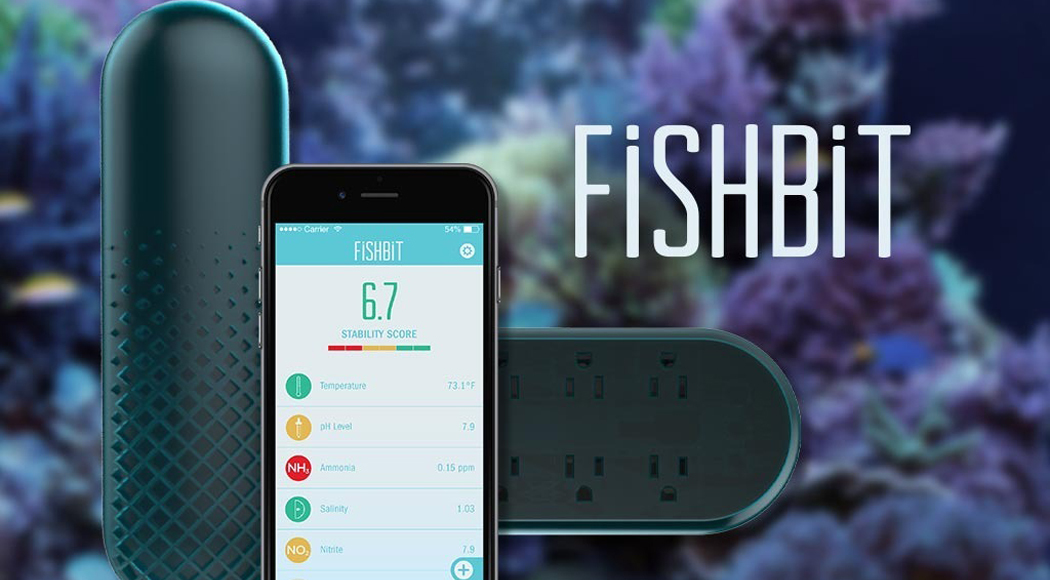Quantifying Nemo

Owning a saltwater aquarium can feel like opening a can of worms, especially for nervous newbies. Tiny imbalances in pH, temperature, and salinity levels can mean the difference between life and death for Nemo and friends.
Thankfully, there's FishBit.
This clever new app and connected device allows aquarium owners to remotely check the health of their tanks. Recently, we spoke with Garrett Winther, an IDEO Chicago engineer by day and FishBit co-founder by night, about how he got involved in the scrappy seven-person startup and how they plan to win over the aquarium market—hook, line, and sinker.
What’s FishBit?
FishBit is the connected aquarium. Owning a large tank, especially a saltwater one, is notoriously difficult and expensive. Fish can die if the water’s pH levels change .1 percent up or down, so there are both emotional and financial stresses that come with owning a tank. FishBit allows owners to remotely control their tank’s chemical balance and keep maintenance activities on schedule.
How did FishBit start?
One of our cofounders, Nathan Levine, grew up with a fish tank. Then, he left for college and asked his dad to take care of it. When he came home for a visit, his whole tank was dead. It was one of those events where he asked himself, “There’s got to be a better way...”
Years later, when the Internet of Things became a reality, Nathan decided to do something about his remote-aquarium-monitoring idea. He’s an iOS developer. He knew how to build software, but he needed someone who could build physical electronic and mechanical prototypes. That’s where I came in.
What’s the development process been like?
My role has been less about final engineering and more about using human-centered prototyping methods to build FishBit the right way. We created the first working FishBit prototype with full sensors and an iOS app in just a weekend. Then, we showed the prototypes to aquarium owners in Chicago, got feedback, and iterated on the design—much like we’d do at IDEO.

What are you learning from being a startup?
How to nimbly prototype hardware and how to launch a product quickly into market. With FishBit, we launched on Kickstarter in a very limited fashion (just 30 Beta units) so we could put it into users' hands and start testing it in real-life situations. We hand-built those 30 units with CNC machines and some interesting molding technologies. Instead of waiting three weeks to have something professionally manufactured, we had something tangible in a few hours and learned something along the way.

What’s next?
We've fulfilled our initial Kickstarter backers' orders and made sure those Beta units lived in people's tanks safely and did everything they were supposed to. This February, we launched another Kickstarter campaign to sell our core product—the device and app—to the masses.
Do you own a fish tank?
I currently have a 30-gallon freshwater tank with three tiny fish in it. It’s challenging. Maybe when FishBit exists, I can upgrade to salt water.
Words and art

Subscribe

.svg)







